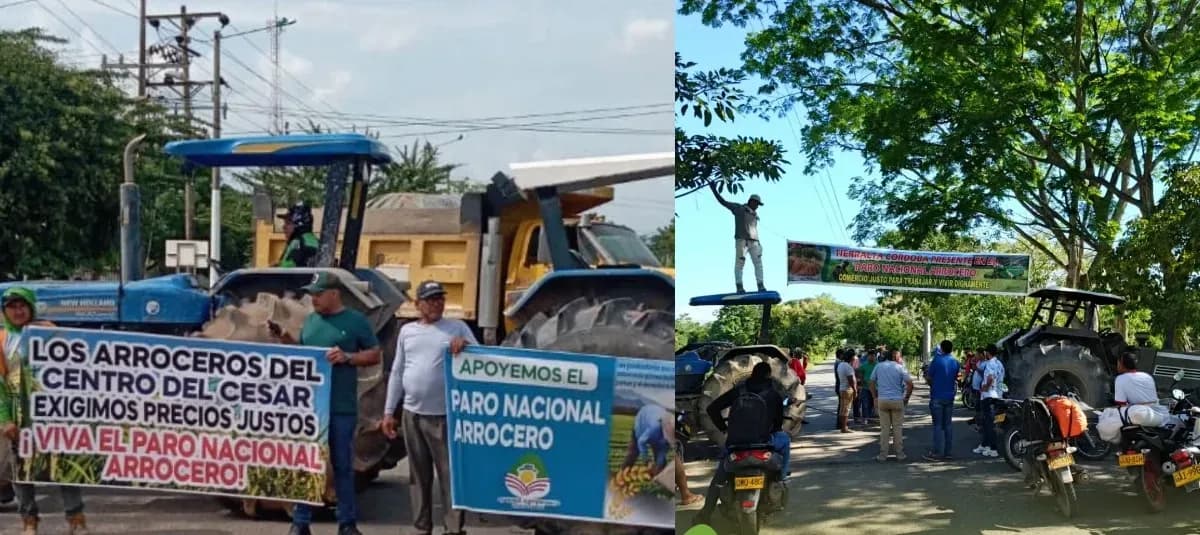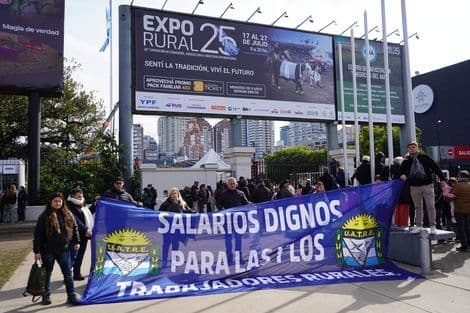Harvest of Discontent: Colombia's Rice Farmers and a Nation on Hold
Colombia's rice farmer strike: Uncover its true cost on vital transport routes, the underlying issues, and the critical ripple effect on national supply chains.
The Stifled Lifeline: Roadblocks and Regional Impact
vital arteries are once again choked, as the ongoing rice farmers' strike, or 'paro arrocero,' brings key transportation routes to a standstill. Today, July 18, 2025, the impact is acutely felt on the , the critical highway, which serves as a crucial conduit between the nation's capital and its eastern plains. Protesters have established persistent blockades in strategic locations, including in , as well as at kilometers 0 () and 35, severely impeding mobility in both directions. This isn't merely a localized inconvenience; the disruption extends across the departments of , , and , effectively severing vital supply lines and stranding countless travelers and goods. The recurring closures of this essential route, sometimes due to protests and at other times due to natural disasters, highlight a deep-seated vulnerability in logistical backbone, creating a palpable sense of anxiety and economic uncertainty across the affected regions.
Roots of Resentment: Why Farmers Take to the Streets
The persistent blockades, despite numerous meetings with the , speak volumes about the deep-seated frustration among rice farmers. Their decision to take to the streets, disrupting national transport, isn't a whimsical act but a desperate plea for attention. Farmers in , , and feel their grievances remain unaddressed, perceiving a significant lack of seriousness and respect from the government in past negotiations. The rejection of the Ministry's latest proposals underscores a fundamental breakdown in trust and communication. For these agricultural producers, the blockades represent a last resort, a powerful, albeit disruptive, means to force dialogue and demand concrete solutions to systemic issues that threaten their livelihoods. Their actions are a stark reminder that beneath the visible protest lies a history of unmet promises and economic pressures that have pushed them to the brink.
A Fragile Connection: Infrastructure Woes Beyond the Protests
While the immediate cause of the current transport chaos is the farmers' strike, it also casts a harsh light on pre-existing infrastructure vulnerabilities. Governor of has voiced profound concern over the absence of a clear plan from the , , regarding the structural integrity of the . This isn't just a road; it's a lifeline connecting seven departments, a testament to its national strategic importance. Alarmingly, there are 16 identified critical points along this highway, exacerbated by the ongoing rainy season, which frequently triggers landslides and further closures. The lack of progress on studies and projects to mitigate these perennial issues, despite previous commitments, suggests a broader governmental inertia. The protests, therefore, serve as a painful amplifier, exposing how a fragile infrastructure, perpetually on the brink of collapse, compounds the economic and social fallout whenever a crisis, natural or man-made, strikes.
Beyond the Fields: The Ripple Effect on Colombia's Economy and Table
The disruption caused by the rice farmers' strike extends far beyond the immediate inconvenience of traffic jams; it sends unsettling ripples through entire economic and social fabric. With the , a critical artery for seven departments, intermittently closed, the flow of goods – not just rice, but a wide array of agricultural products and other commodities – is severely hampered. This bottleneck inevitably leads to supply chain disruptions, causing shortages in urban centers and driving up prices for essential foodstuffs, directly impacting the average household. Businesses face mounting losses due to delayed deliveries, spoiled produce, and reduced access to markets. The national economy, already navigating various challenges, feels the strain as productivity dips and investor confidence wavers. This protest isn't just about rice; it's a stark illustration of how a localized agricultural crisis can quickly escalate into a national economic concern, potentially destabilizing food security and exacerbating inflationary pressures across the country.
Pathways to Resolution: Finding a Way Forward
Resolving the current standoff demands more than just temporary concessions; it requires a fundamental shift in how the government engages with its agricultural sector. The repeated failure of negotiations, as evidenced by the farmers' rejection of proposals and their sense of disrespect, points to a deeper crisis of trust. A sustainable path forward must involve genuine, transparent dialogue, moving beyond mere meetings to concrete, actionable commitments. Addressing the structural issues plaguing the , with proactive investment in its 16 critical points, is equally crucial, preventing future disruptions regardless of their cause. The government must demonstrate a serious, long-term vision for agricultural stability, perhaps through revised policies on pricing, subsidies, and market access, alongside robust infrastructure development. Only by rebuilding trust and implementing tangible, future-proof solutions can hope to avert future 'harvests of discontent' and ensure both the prosperity of its farmers and the stability of its national economy.
Related Articles

Harvesting Justice: Colombia's Rice Farmers' Fight for Livelihoods and National Food Security

Harvesting Justice: Colombia's Rice Farmers' Fight for Livelihoods and National Food Security

Argentina's Unpaved Promise: The High Stakes Driving La Rural's Critical Dialogue

Argentina's Unpaved Promise: The High Stakes Driving La Rural's Critical Dialogue

Harvesting Inequality: Argentina's Rural Workers Fight for Dignity Amidst Abundance

Harvesting Inequality: Argentina's Rural Workers Fight for Dignity Amidst Abundance

Beyond the Baht: Navigating the Future of Thai Rice in a Shifting Landscape
